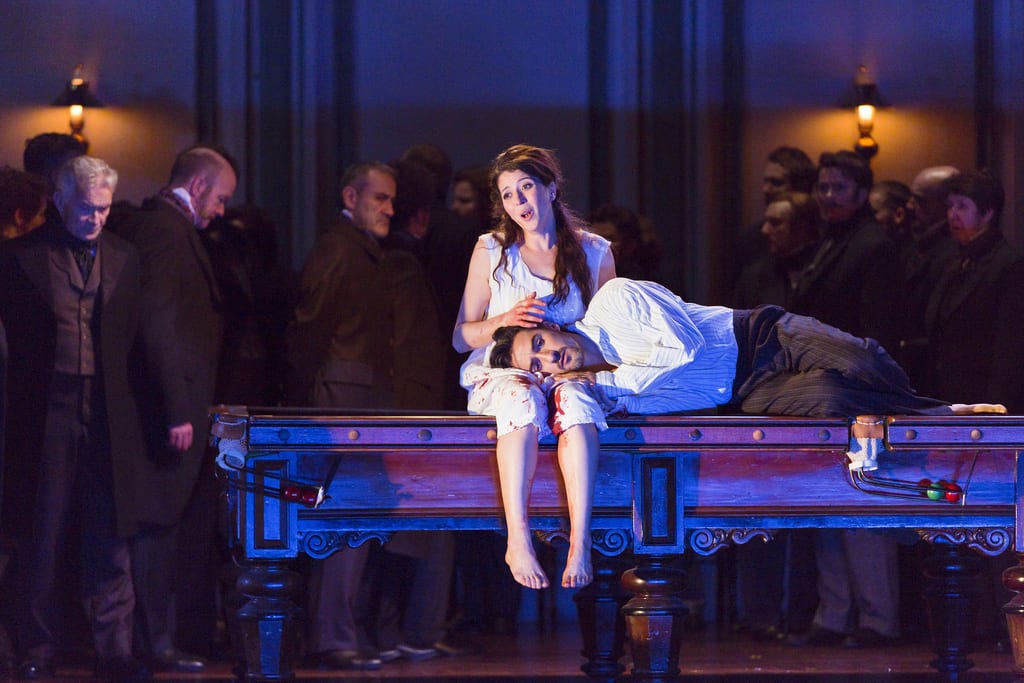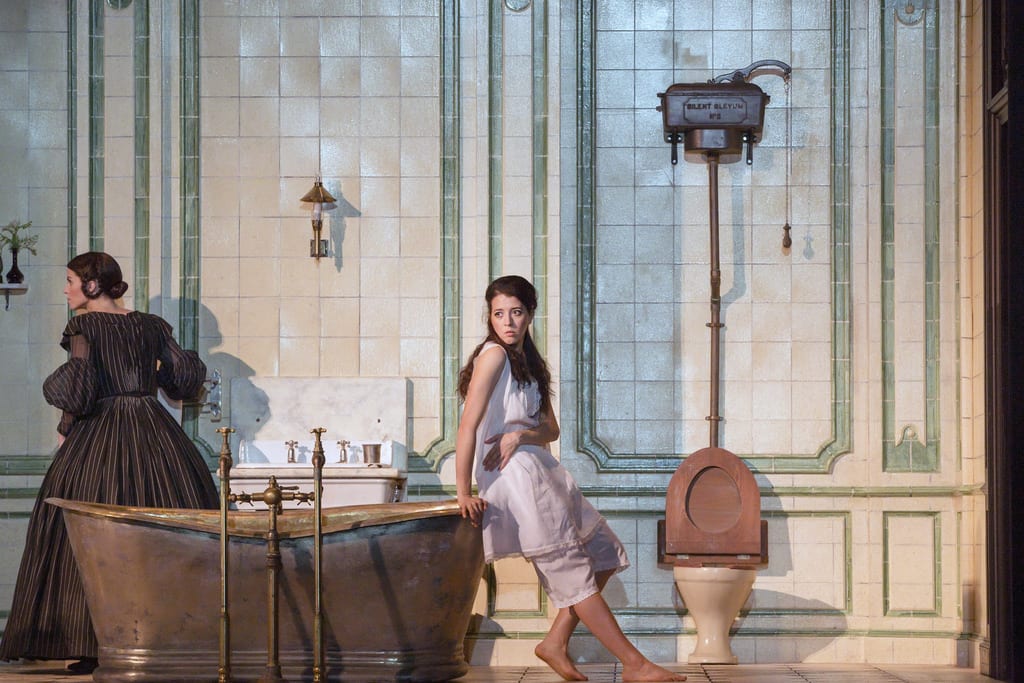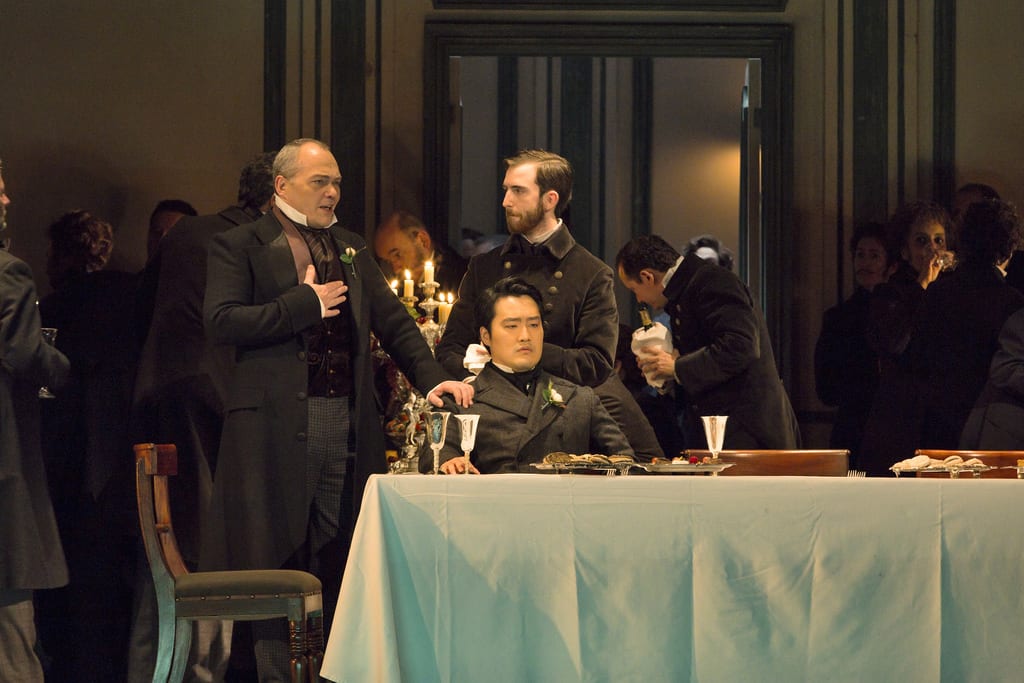This famous opera regained its place in the repertory thanks to the role it played in the careers of Callas and Sutherland. However, it is has sustained it because of the equipoise it creates between wildly Gothic grand guignol and the maddest of mad scenes in the repertory on the one hand, and one aria or ensemble after another of exquisite bel canto formalism. Any director needs to respect this balance, giving credit to both sides, but unfortunately Katie Mitchell’s over-fussy and tendentious production throws blood around like paint while simultaneously draining the dramatic life out of the story. Only the musical values and some fine performances save this revival of the 2015 original from being a long and frustrating evening.
The plot revolves around a forced marriage: Lucia (Oropesa) is, through a deception, compelled by her brother Enrico (Maltman) to marry an ally of his and turn her back on her lover Edgardo (Castronovo), who is Enrico’s inveterate foe. She kills her husband on her wedding night and goes mad before committing suicide, followed by the despairing Edgardo. It is a grim tribal revenge tragedy that started life as a tale of the Scottish Borders by Walter Scott, receiving memorable visual embodiment as a painting by Delacroix as well.
Mitchell and designer Vicki Mortimer set the tale in Victorian times – very much crinolines and gloomy, cluttered interiors. There is a split stage too which turns out to be a mixed blessing. While this allows the performers to fill out the story with many scenes that usually take place off-stage, the doubling is often distracting, not least when the murder of the husband on one side effectively neutralises an important chorus on the other. Time and again the dramatic line is interrupted by gratuitous distractions that convey an ideological rather than a theatrical point. The worst example of this is the mad scene itself, both overpopulated with two ghosts who have been popping up at intervals throughout the opera, and preceded by a bloody miscarriage, as if the murder of her husband were not enough to tip Lucia over the edge.
What saves this production, despite its director’s best efforts, is the strength of the central trio of singers. Oropesa is a fine actress with a smallish but very accurate and flexible voice. She is fully up to the huge demands of this role, and conveys Lucia’s feisty independence and defiance without any need for the director’s heavy underlining. Maltman is always a reliable and charismatic singer, and while Enrico offers few redeeming features, he manages to find light and shade in a role that is often presented as little more than a cartoon villain. Castronovo is perhaps best of all: his role is the one least affected by the innovations and vagaries of the production, and his golden tone wafts him through one fiendishly tricky aria after another with panache.
There is strength in depth elsewhere in the production: as Alisa, the maid, Rachael Lloyd offers an excellent foil to her mistress, and there is also sterling support from Michele Pertusi as Raimondo, the chaplain. In the pit Michele Mariotti coaxes some fine lugubrious sonorities and plenty of sprightly dash from the orchestra in a score where the composer seems to have taken more trouble than usual over the orchestration. The crucial harp and flute solos were well taken and the chorus was as reliable as always in its limited number of interventions.
This is a case where the director should have trusted more to the original and accepted that in an already finely crafted work, less ‘help’ from the director would have in fact yielded more artistically. Enthusiasts for this opera will be dissatisfied on the whole, but new recruits will not be deterred for good.




